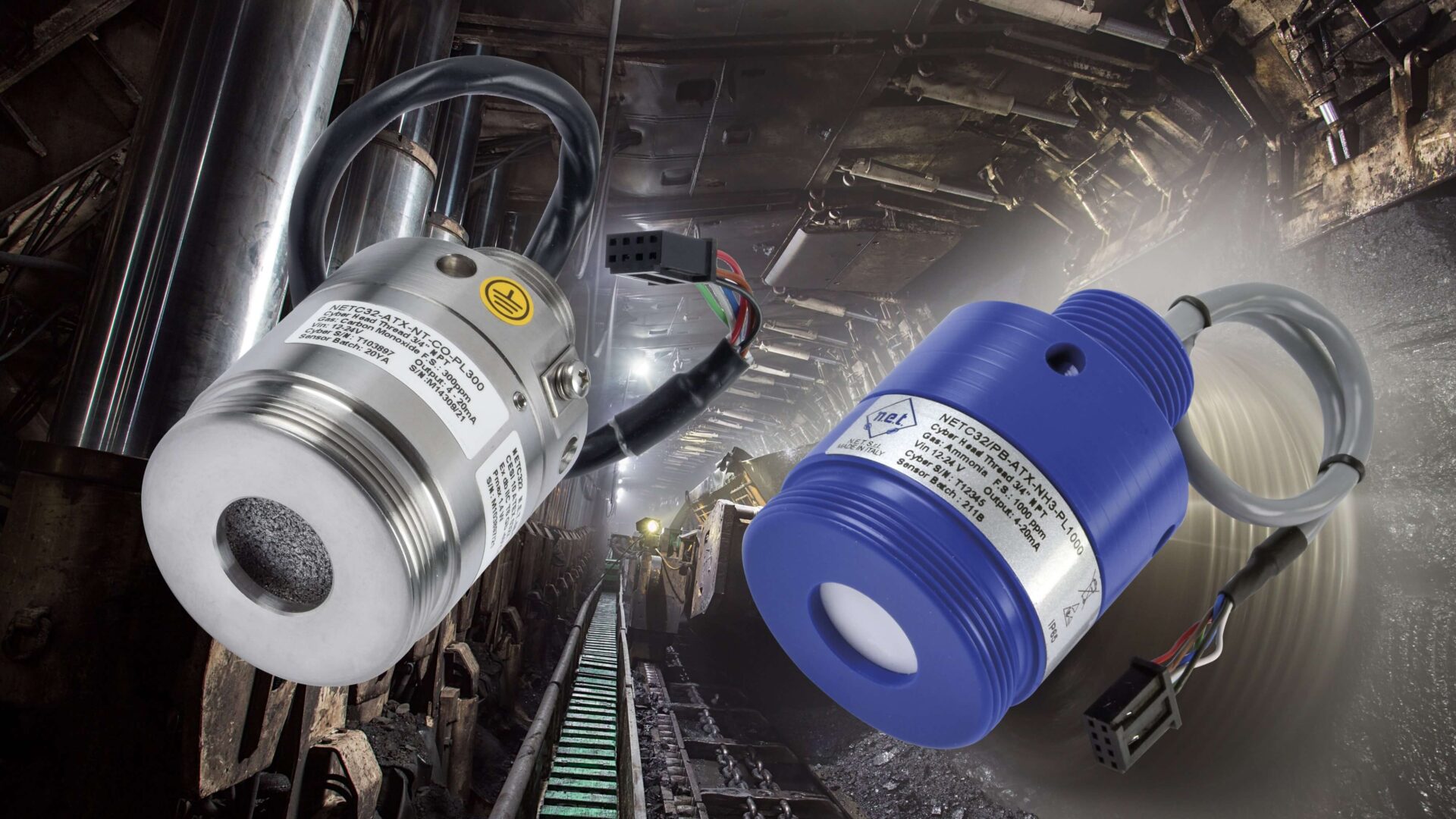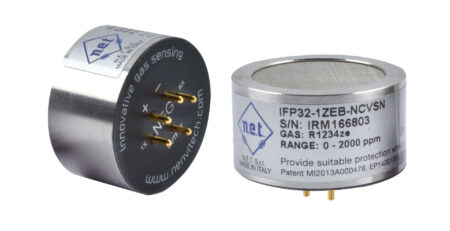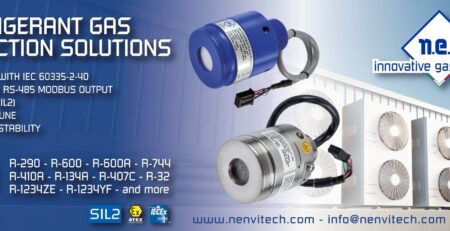AIN vs XIN – WHICH TRANSMITTER IS RIGHT FOR ME
The Cyber Head from NET is an ATEX/IECEx certified stainless steel enclosure complete with sensor and electronic transmitter, designed to be used as a component of a fixed flammable gas detection system or as a full conformity standalone field device.
The Cyber Head is available also in a non explosion-proof version made in plastic for residential, commercial and light industrial applications.
When coupled with an NDIR sensor, the Cyber Head can be equipped with two different versions of electronic transmitter: the full Cyber version (AIN) and the NDIR-dedicated XIN version.
Users are often confused about which one is better for them, so here’s a short list of the significative differences between the two. In the table below, the differences are summarized schematically.
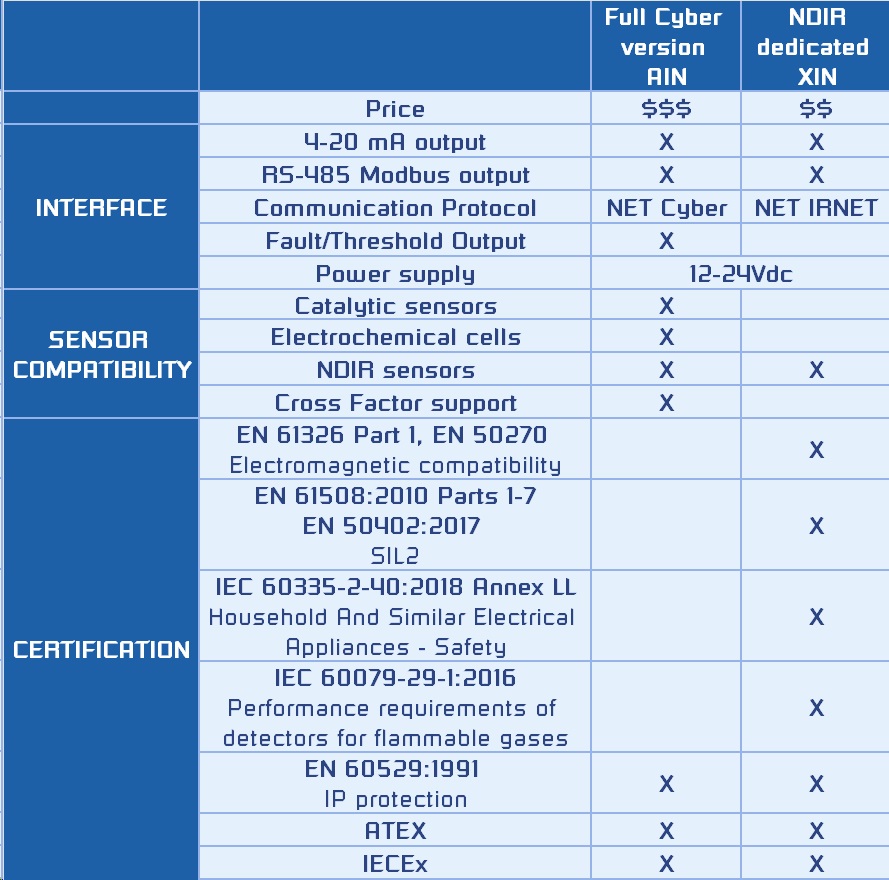
1. PRICE
The full Cyber version (AIN) on one side is a microprocessor-based electronic transmitter able to perform calculations, conversions and activations, on the other hand is a longstanding product from NET based on older and very reliable electronic components, battle tested by thousands of users worldwide and across the span of two decades. In fact, NET is working on a redesign of the Cyber transmitter with latest-generation electronics, compatible with the old.
The NDIR-dedicated XIN version is a simpler transmitter, providing amplification and deamplification of output signals and power supply. Because of this, the latter has a more favorable price than the full Cyber version.
2. ANALOG INTERFACE
Both transmitters provide an industry-standard 4-20mA output, although the wiring scheme is slightly different for the two products (see picture below).
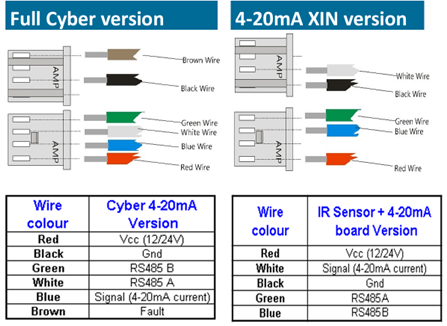
3. DIGITAL INTERFACE
Both transmitters provide an industry-standard RS-485 Modbus RTU output. The wiring scheme is also different in the two cases (see picture above).
This is not the only difference. The full Cyber version (AIN) implements the NET Cyber communication protocol, while the NDIR-dedicated XIN version, as it does nothing but amplifying the original sensor protocol to RS-485 levels, speaks the sensor’s own NET IRNET protocol. The two protocols are both Modbus RTU implementations, but the structure and the register allocation is different.
If you are already a user of the full Cyber version for catalytic sensors and electrochemical cells, we recommend sticking to this version also when using NDIR sensors.
4. FAULT/THRESHOLD OUTPUT
The full Cyber version ability to perform calculations, conversions and activations allows it to implement a user-programmable threshold outputs or a fault output (default). This is not supported on the NDIR-dedicated XIN version instead.
5. POWER SUPPLY
Both transmitters accept power supply between 12 and 24 VDC.
6. SENSOR COMPATIBILITY
The full Cyber version supports catalytic sensors and electrochemical cells, other than NDIR sensors. If you are planning to use these technologies, and not only NDIR sensors, the Cyber is definitely the choice. If you are only using NDIR sensors, then you can opt for the XIN version, provided you do not have other necessities barring its use.
7. CROSS FACTOR SUPPORT
Due to its computational capabilities, the full Cyber version can apply a cross factor to the primal output of the sensing element and provide an output which is directly corrected. This is extremely useful, for example, when detecting different hydrocarbons using either a catalytic or an NDIR sensor. The Cyber transmitter can apply the relevant cross factor and provide a 4-20mA output directly proportional to the concentration of the target hydrocarbon. The same can be said for a refrigerant gas, detected through a cross factor using a sensor calibrated for another gas. This option is not supported on the NDIR-dedicated XIN version, as this cannot modify the output of the primal sensor.
8. EX CERTIFICATIONS (ATEC, IECEx)
Both transmitters can be enclosed in flameproof enclosures certified to ATEX and IECEx, either as a component or a full conformity complete field device.
9. IP CERTIFICATION
Both transmitters can be enclosed in IP65 certified housings, in case of flameproof housings, they must be equipped with a specific filter (GD, see our accessories page). In case of non-flameproof (plastic) housings, they are IP65 certified as is.
10. OTHER CERTIFICATIONS
The NDIR-dedicated XIN version has achieved 4 other critical certifications:
EN 61326 Part 1, EN 50270 – Electromagnetic compatibility
The NDIR-dedicated XIN version transmitter has certified immunity and emissions regarding electro¬magnetic compatibility (EMC) for electrical equipment, operating from a supply or battery of less than 1 000 V AC or 1 500 V DC, including the specific compatibilty required for the detection and measurement of combustible gases.
EN 61508:2010 Parts 1-7, EN 50402:2017 – SIL2 (read more)
With our NDIR-dedicated XIN version transmitter, you can therefore source complete sensor heads with standard analogue and digital interfaces certified to ATEX, IECEx and SIL2.
IEC 60335-2-40:2018 Annex LL – Household and Similar Electrical Appliances – Safety (read more)
IEC 60335-2-40 deals with the safety of electric heat pumps, sanitary hot water heat pumps and air conditioners, incorporating motor-compressors as well as hydronic fan coils units, dehumidifiers (with or without motor-compressors), thermoelectric heat pumps and partial units. NET Cyber Heads, both in their stainless steel and plastic versions equipped with the NDIR-dedicated XIN version transmitter, have been recently declared conform to Annex LL of IEC 60335-2-40:2018, which defines performance requirements for Refrigerant Leak Detection Systems.
IEC 60079-29-1:2016 – Performance requirements of detectors for flammable gases (read more)
IEC 60079-29-1 specifies the general requirements for testing and performance of gas detectors. Gas detectors with the function of control measure compliant with EN60079-29-1 offer several advantages to both users and manufacturers, setting requirements for construction, testing and performance.

